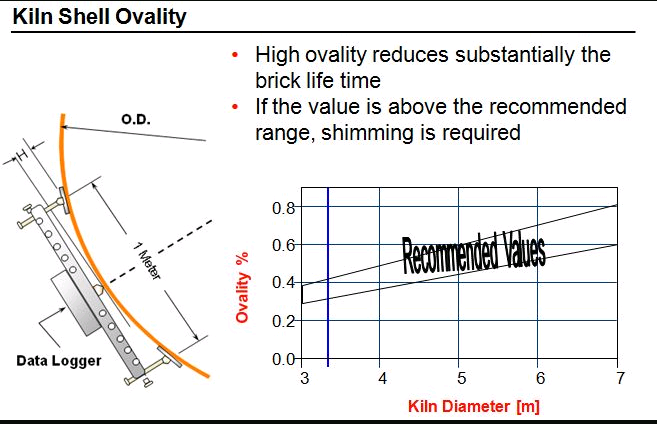Contents
click here to download Holcim , , Lafarge , Most importnant manuals , most important excel sheets
click here to download Holcim , , Lafarge , Most importnant manuals , most important excel sheets
Tyre Migration Discussion

what do you think about the below ??
The normal maximum design ovality for a tyre is .2% relative to the inside diameter of the kiln shell. This would give a difference to 8 mm between the horizontal and vertical outside dimension on a tyre for a 4000 mm kiln. Under ideal conditions, this would result in a shell ovality of 0.23%, but in practice this is rarely achieved. Experience has shown that ovalities become very critical at .5% and this should, therefore, be treated as an absolute maximum, with .4% being the point at which correction should be made.
Under cold conditions, it would be normal to find ovalities approaching .5% or, in some cases, even more. It is, therefore, important to obtain the minimum cold gap, but at the same time giving ample clearance to allow the shell to expand within the tyre without waisting occurring. It is normal to assume a temperature differential of 200°C at the hottest tyres which would fall to 100°C at the coldest tyre. The differential of 200°C would normally assume a maximum shell temperature of about 325°C. Hotter shell temperatures will require larger cold gaps and thus increase ovality and refractory stress when turning the kiln cold or at low shell temperatures for any appreciable length of time. High shell temperatures also reduce the stress and deflection resistance capabilities of the shell which result in reduced shell life.